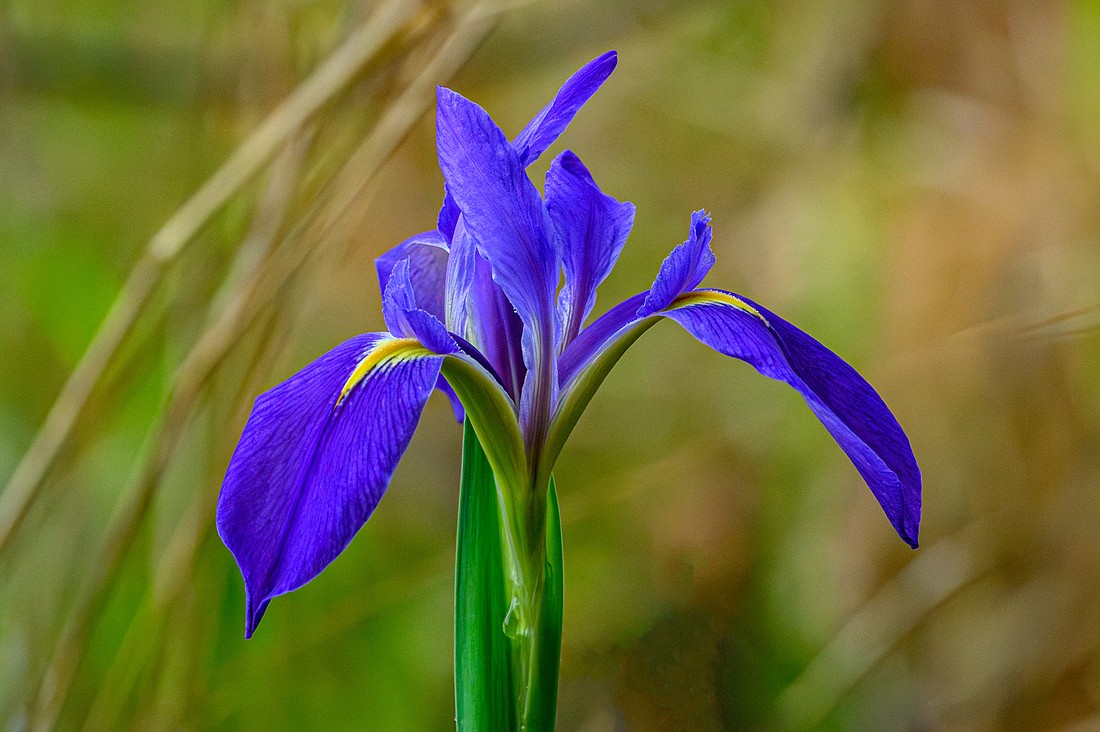- November 9, 2024
-
-
Loading

Loading

With a stalk 2-3 feet tall, sword-like leaves and a showy purple flower 3-4 inches wide, the prairie iris is no shrinking violet!
Also known as the savanna iris (from Iris savannarum, its scientific name) this stunning wildflower typically blooms in the spring in wetlands, on the edge between dry land and shallow water.
Like other native plants, prairie iris play an important role in their ecosystems, where they're a source of nectar for butterflies, pollen for bees and also have seeds that provide food to birds.
Prairie iris are rhizomatic, meaning they have a rhizome, or a system of roots, living and growing under the soil. Periodically, a rhizome sends shoots above soil, producing a clone of the parent plant.
Irises can also reproduce though seed propagation. In this case, it takes two plants to make the new one, with pollen from one plant fertilizing a female flower from another.
To assure seed propagation, as they obviously cannot move, many flowers have visual cues that attract pollinators, such as insects, to them.
Such cues include size, color, as well as showy petals and sepals (a flower's outermost part). Some flowers, like prairie iris, even have nectar guides. These unique patterns direct pollinators to pollen, nectar or both.
Interestingly, in many bee-pollinated flowers, there is a region of low ultraviolet reflectance near the center of each petal. Though invisible to humans, bees can detect ultraviolet light and quickly home in on their target.
As plants cannot move to escape predators, they've developed means of protecting themselves from herbivorous animals. Some plants have physical defenses such as thorns, spines or prickles.
But the most common form of protection is chemical, with plants producing a vast array of compounds to deter herbivores from consuming them. As they cause skin irritation or worse, many of these toxins help deter humans too.
The highest concentration of noxious compounds that help protect irises is found in their rhizomes, but the entire plant is toxic. So if you spot these native beauties in the wild, please enjoy them from afar. For your benefit, as well as that of our ecosystems!